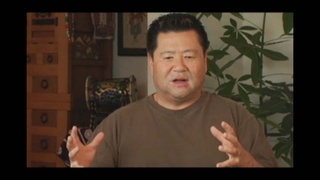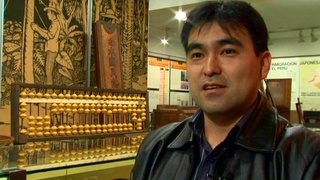Interviews
Always drawing
Well we were...both of us [Grace and Lawrence “Larry” Shinoda] were always drawing, our mother could draw very well, our father could too. And so it was kind of just a natural thing. My mother always had a little box of pencils on top of the radio and this big stack of recycled papers: shopping bags, grocery bags, she would cut up Shoe holes, all these papers. And then, our prized possession was this big blackboard that we had behind, there was a swinging door between the kitchen and the dining room, and they had this big blackboard that our uncles gave us one Christmas. And we would divide the board in half, and sometimes he [Larry] would have half the board and I would have the other half or sometimes we would do a big picture together. And we just were always drawing.
Date: September 9, 2011
Location: California, US
Interviewer: John Esaki
Contributed by: Watase Media Arts Center, Japanese American National Museum



